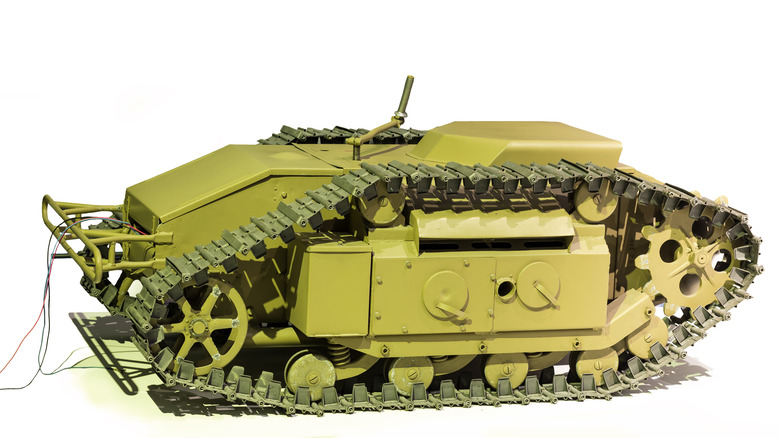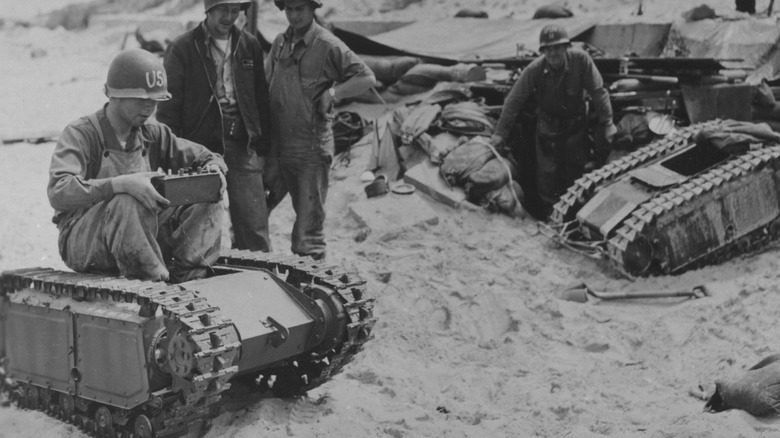Mine On Treads: The History Behind The Goliath Tracked Mine
There isn't much that spurs the advancement of technology like war. And during no conflict in human history was that more true than World War II. The German military is notorious for the machinery that propelled it by land, sea, and sky forward in its quest for domination. From the massive U-boats that wreaked havoc across the Atlantic to the scrappy Messerschmitt Bf 109 that tore through the skies with the Luftwaffe, there was no shortage of fearsome battlefield tech. However, one such piece of machinery bore a formidable name despite its relatively small stature. Though it looks like a legendary WWII tank, this remote control vehicle was not used to carry troops or push forward on the front lines of battle. It was a small weapon intended to pack a big punch.
Known as the Goliath Tracked Mine, this tool was commissioned by the German military as a major explosion on tiny wheels. Named for the biblical giant taken out by David with a slingshot, however, it lived up to the moniker when it was cut short by poor design.
What happened to the Goliath?
Though this was originally a German weapon, the Goliath has its roots in French design. The inspiration for the miniaturized motor came from Adolphe Kégresse, a notable French vehicle designer. Curiously, in 1940, the Wehrmacht stumbled upon his prototype in the waters of the River Seine. The mine was introduced in 1942, and troops operated it through a joystick. Sized at roughly 1 foot tall and 4 feet long, with a 12-horsepower engine, the machine transporting 200 pounds of explosives wasn't wireless. Two wires were responsible for direction, while the other controlled firepower. Alas, it wasn't as successful as the German military hoped.
It wasn't a slingshot that took out the Goliath Tracked Mine. Due to the lack of power, it struggled on the rugged terrain, and the fact that it could only travel as far as the wires would allow limited its effectiveness on the battlefield. Still, while the miniature giant wasn't a success, it helped pave the way for future remotely operated vehicles.

